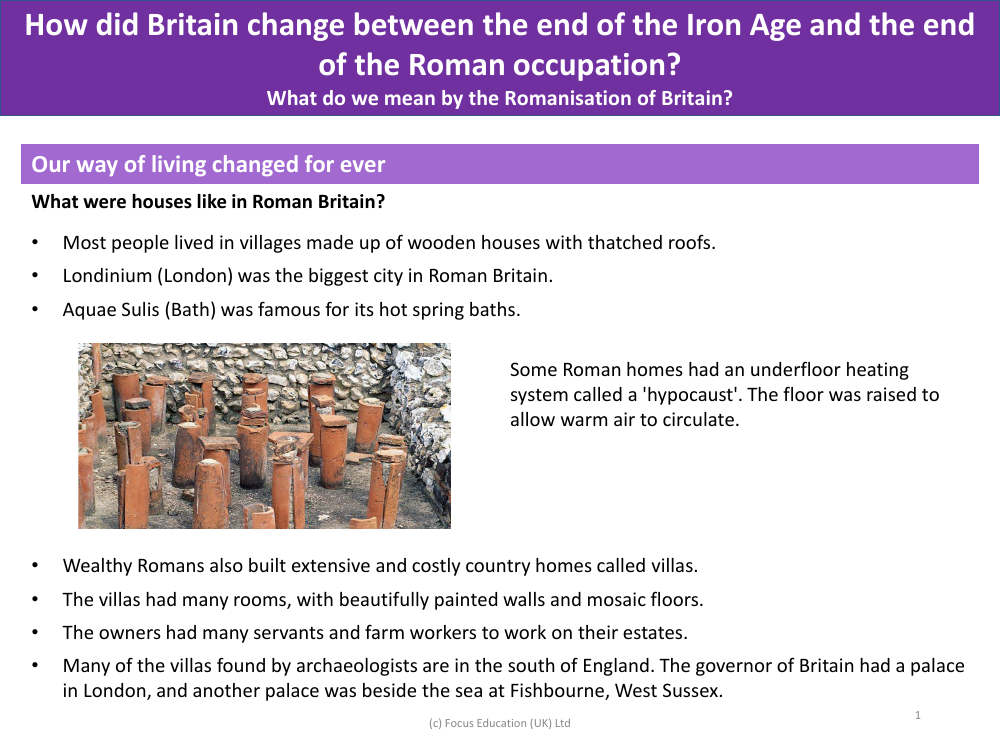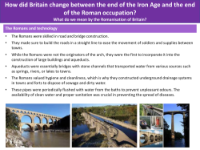How the Romans changed houses - Info sheet

History Resource Description
During Roman Britain, the landscape of domestic living underwent a significant transformation, affecting the way people lived for generations to come. Before the Romans, most Britons resided in villages composed of simple wooden structures with thatched roofs. However, the introduction of Roman architectural innovations marked a turning point. Londinium, now known as London, emerged as the largest city, while Aquae Sulis, known today as Bath, gained renown for its luxurious hot spring baths.
Among the most notable advancements was the introduction of the hypocaust, an ingenious underfloor heating system that circulated warm air beneath raised floors, a feature that epitomised the comfort and sophistication of Roman living. Wealthy Romans constructed grand country residences, known as villas, which were expansive and lavishly decorated with painted walls and intricate mosaic floors. These villas were not only homes but also the centre of large estates, often staffed with numerous servants and farmworkers. Archaeological discoveries, particularly in the south of England, reveal the grandeur of these estates, with notable examples including the governor's palace in London and the seaside palace at Fishbourne in West Sussex.








